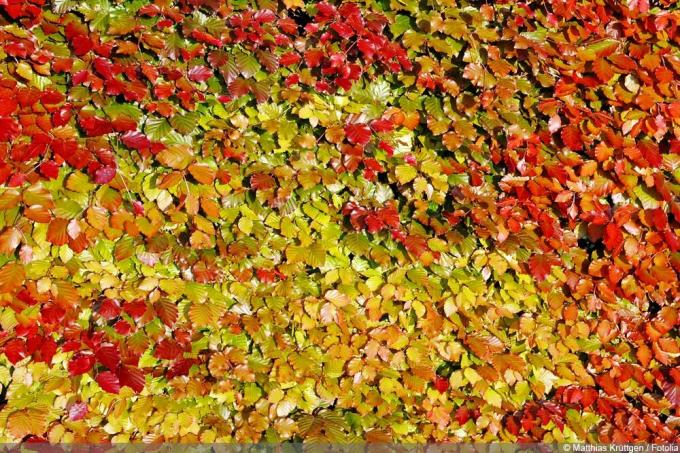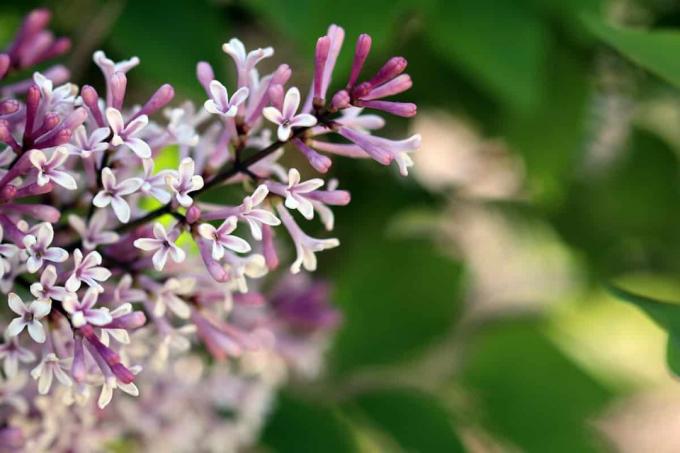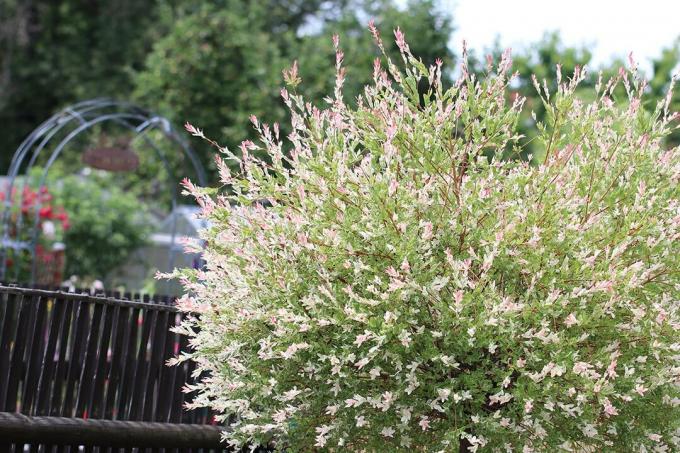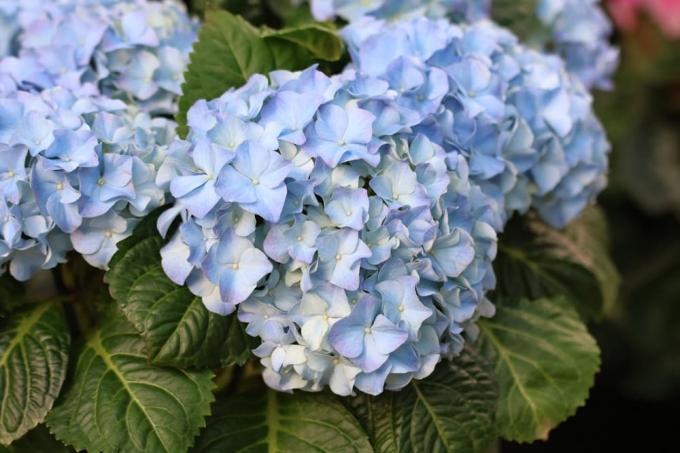

Table of contents
- Location
- Floor
- planting distance
- Pour
- Fertilize
- cut
- cutting technique
- diseases and pests
- hibernate
To simply describe the copper beech hedge as an attractive plant would be an understatement. With its dense foliage and the striking dark red glowing leaves, it exerts a real magic that more and more garden owners succumb to. Yes, it is definitely an eye-catcher in every garden. The copper beech hedge is particularly suitable as a perfect, hardly penetrable privacy screen on property borders.
Location
The copper beech hedge is definitely one of the really uncomplicated garden plants. This is already evident from the fact that it can grow and thrive in practically any location. It doesn't matter whether it's sun, partial shade or shade - the copper beech can cope with it. This flexibility is of course a great advantage if the hedge is to be used as a privacy screen in the garden. This is often needed where the site conditions may not be ideal. The enormous adaptability of the copper beech hedge naturally plays into the hands of a garden owner in such a case. Nevertheless, there is of course the perfect location for this plant, where it grows particularly well. And it should be as sunny as possible.
Floor
In the copper beech hedge there is a tree, a variation of the copper beech, which only changes into a hedge because it is regularly cut and planted in rows. However, the tree character means that the plant has very deep roots. Medium to deep soil is recommended so that the heart roots in particular can find the necessary support in the soil. It should also be as rich in humus as possible and have a low lime content. High proportions of clay are also ideal, as this allows water to be stored better in the soil. In order for the copper beech hedge to develop optimally, the pH value is best in a range between 5.0 and 7.5.
planting distance
The first step on the way to the perfect hedge is the right planting, even with copper beech. The planting distance plays a particularly important role here. A distance of 50 to 80 centimeters between the individual plants has proven to be perfect. Half of the growth width should be maintained as a minimum distance. As a general rule, there can be no more than two individual plants per square meter. If the copper beech is not used as a hedge, the distances can of course be significantly larger. But then a minimum distance of 15 meters to walls and roofs is necessary. Proceed as follows when planting:
- Dig a planting hole (minimum size: twice the width of the root ball)
- Insert the root ball and cover with soil up to the upper root end
- Tamp down the soil around the stem
- Pour water immediately
- Repeat the process for the other plants in the hedge

The best time to plant a copper beech hedge is spring. Plants applied in March or April will then have enough time to develop well into winter.
Tip:
In order to guarantee good water drainage, the planting hole can be dug a little deeper and provided with drainage. Pebbles or shards of pottery are suitable as material.
Pour
The copper beech hedge also needs a lot of water, especially in summer. Long periods of drought or even complete dehydration can lead to considerable damage. It is therefore essential to water as soon as the top layer of soil has dried. Regular finger checks are recommended. On the other hand, waterlogging must be avoided at all costs. It inevitably leads to root rot, which will kill the plant sooner or later. So too much water is not a solution either. Since copper beeches not only get along well with lime, but also need a certain proportion of lime for their growth, they can also be watered with very calcareous water without hesitation.
Fertilize
The copper beech hedge is only fertilized between the beginning of March and the end of July. By August at the latest, the additional supply of nutrients must be stopped completely, otherwise significant damage to growth could occur. So-called long-term fertilizers, which are administered once a month, are particularly suitable as fertilizers. In spring, growth can also be boosted with blue corn. The soil around the plants should also be enriched with mulch and compost in spring and autumn. Horn shavings can also be used. In general, the copper beech hedge should only be fertilized in moderation. It is also important that the fertilizer does not come into contact with shoots and leaves.
cut
Regular trimming, at least once a year, is a must for every hedge. Of course, this also applies to the copper beech hedge. However, timing is very important to her. Since there is a tree in it and therefore a very deep-rooted plant, the cut must be made in spring before the first leaves sprout. The months of April and May are ideal for this. In this phase, the wound healing is most rapid. If the copper beech hedge shows very strong growth, it should be trimmed again in summer. Ideally, this second cut should take place in August so that new shoots can appear before autumn or winter. able to grow well through the winter. If, on the other hand, the hedge is not so keen on growing, one cut per year is completely sufficient.
cutting technique
At the first cut At least half of a new shoot is removed after the basic cut. Cutting always starts at the sides of the hedge. When shaping, it is important to ensure that the hedge is wider at the bottom than at the top. This ensures that the lower branches and leaves also get enough light. Once the sides are done, it's time for the top end. The best cutting tool is an electric hedge trimmer. Incidentally, the copper beech hedge does not tolerate a radical pruning very well, which is why annual pruning is definitely recommended. If you want to do something good for your hedge after trimming, you can also spray the branches and leaves with water as an exception.
diseases and pests

No matter how uncomplicated the copper beech hedge may be, it is not immune to diseases and pests. The right care is ever an important contribution to prevent m problems. The so-called leaf tan is relatively common in the copper beech hedge. It goes back to a fungal attack and can only be combated with a fungicide from a specialist dealer. The beech wool aphid can also be dangerous for the hedge. If it occurs, it is best to spray the entire hedge with nettle broth. In the case of an infestation with the beech leaf gall midge, however, an insecticide is required. In addition, the fallen leaves should be removed and disposed of in autumn, as the larvae of the mosquito hide in them.
Tip:
In order to detect a possible infestation with pests or a disease at an early stage, the plant should be checked regularly. A clear warning signal are many withered leaves in spring and summer.
hibernate
The copper beech and thus also the copper beech hedge are native plants. As a result, they can cope very well with the weather conditions in our latitudes. In other words: a copper beech hedge is hardy and can withstand severe frosts. Overwintering is therefore not necessary - and would hardly be possible with a hedge.
 garden editorial
garden editorial I write about everything that interests me in my garden.
Learn more about ornamental trees

Shell cypress, Chamaecyparis obtusa: 10 care tips
The clam cypress, which originated in Japan, is one of the most popular evergreen garden plants in this country. The 10 most important tips for caring for conifers have been compiled for you here.

Dwarf lilac: 9 tips for care and pruning
The dwarf lilac impresses with its magnificent and fragrant flowers, which at the same time form an ideal retreat for native insects. The nine most important tips for caring for and especially cutting mini lilacs are summarized here for you.

Flamingo Tree: Care and Pruning | flamingo pasture
The flamingo willow (Salix integra 'Hakuro Nishiki'), better known as the harlequin willow, is less noticeable with its inconspicuous flowers than with its colorful leaves. Its crown with the white-pink-green shoots draws everyone's attention, whether as a shrub or as a standard tree.

23 evergreen, hardy & fast growing shrubs
Evergreen and hardy shrubs are ideal for adding color to garden beds, patios and balconies in winter. Fast-growing specimens are particularly in demand. The 23 most popular shrubs can be found in the home garden guide.

The basics of hydrangea care
Hydrangeas provide a real bloom in the garden or on the balcony, as long as they are cared for professionally. Read here how best to do this.

Rhododendron location: 6 important criteria
Rhododendrons are known for their sea of flowers, which, depending on the variety, unfolds its full splendor between March and June. However, the plants only develop the numerous flowers if the location meets their requirements. Rhododendrons are extremely picky when it comes to location.



